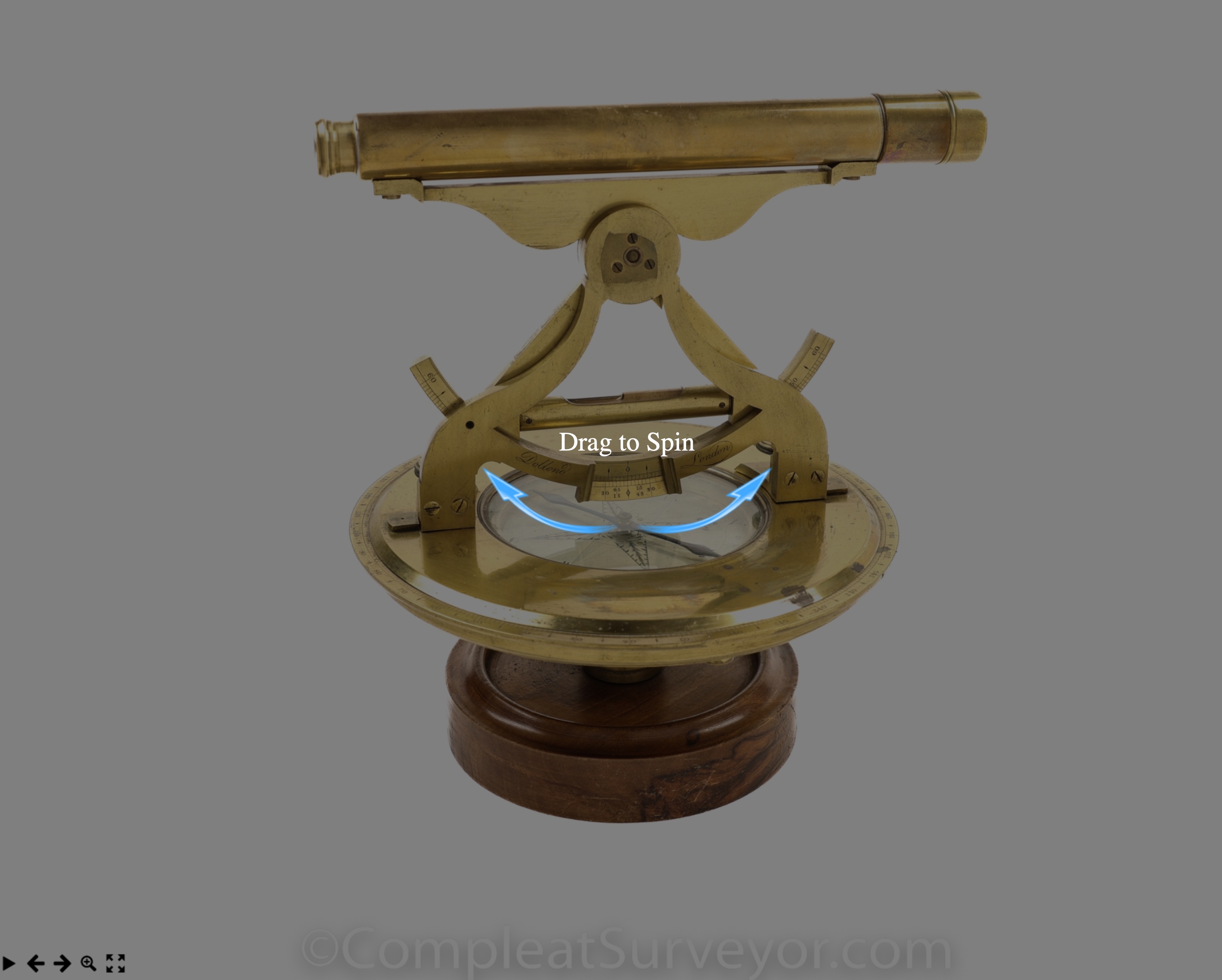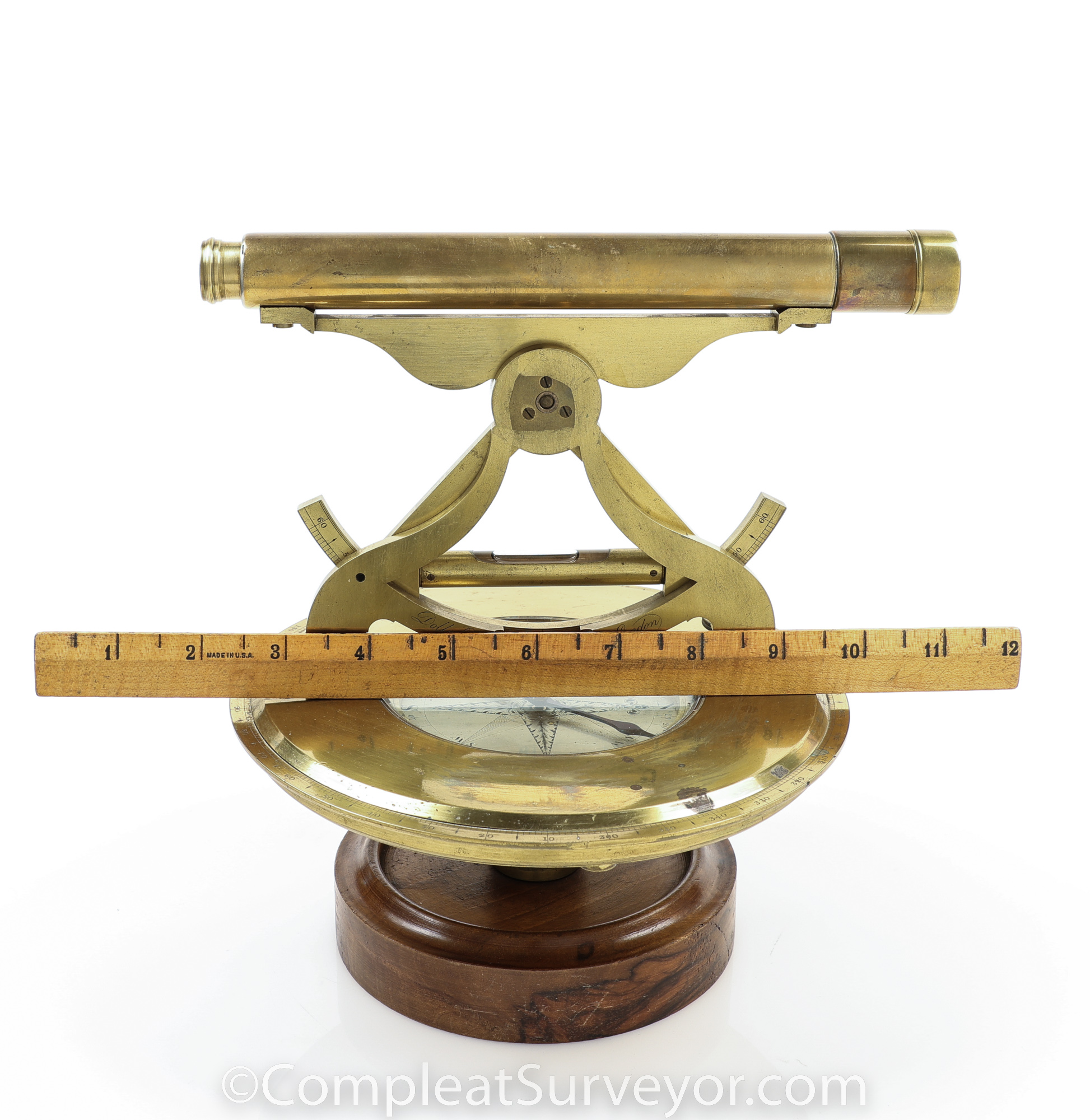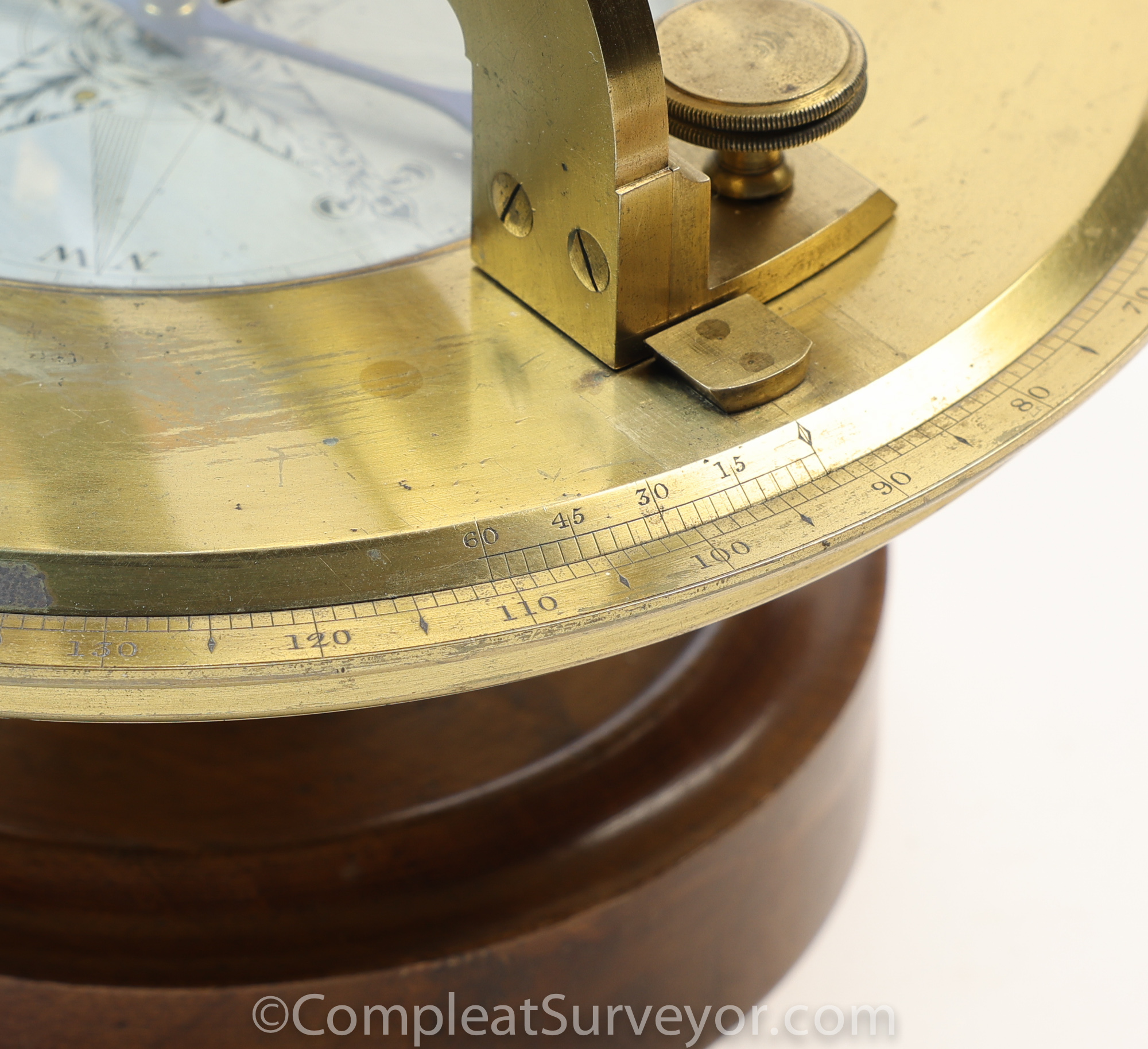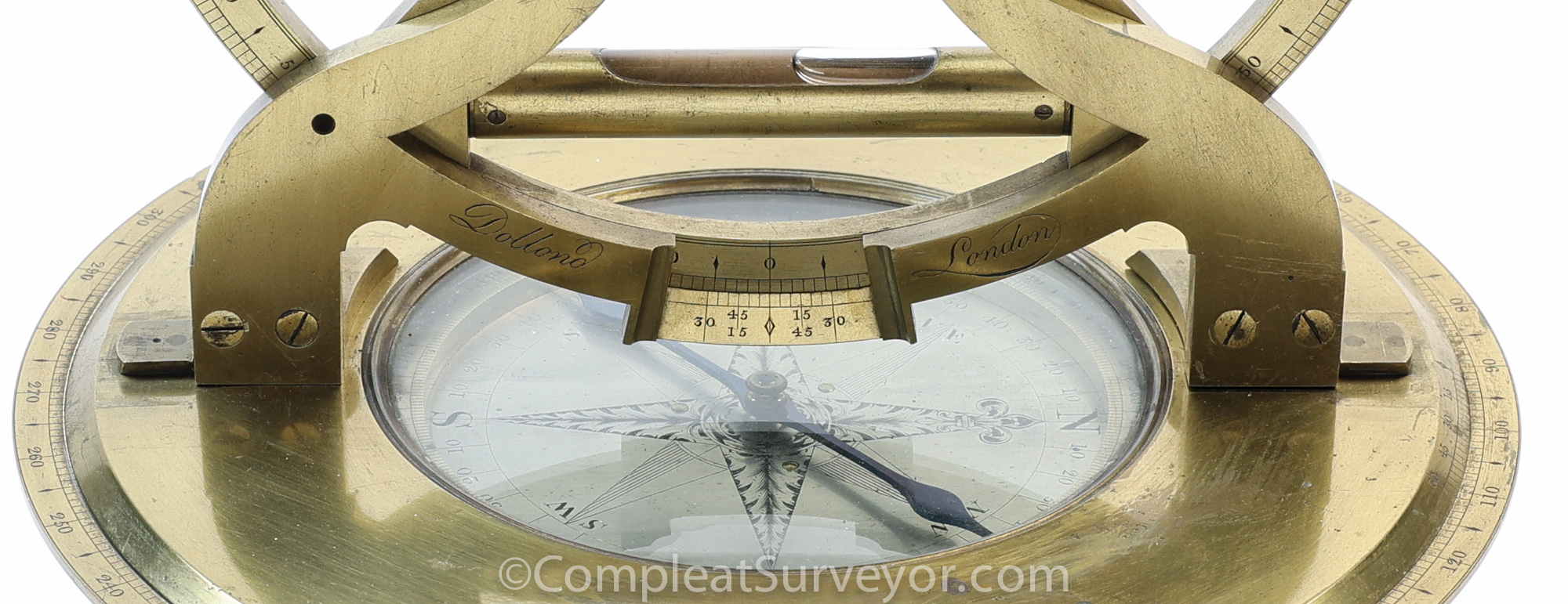
Dollond Theodolite Circa 1760s
This Dollond Theodolite is a nice example of an early Telescopic Theodolite. One neat feature - the surveyor could remove the telescope and insert either 2 or 4 sight vanes as the survey required. Thus, this Dollond Theodolite could either function as an Altazimuth Theodolite or a Simple Theodolite (some people call this a 4 vaned Circumferentor).
Dating an early Theodolite involves some guesswork. For many early Theodolites the makers basically figured out a way to put a telescope on an existing 2 or 4 vane Simple Theodolite without chaining the entire design of the instrument. I land on the 1760s on this Dollond because of its very simple and early design - basically it's a 4 vaned Simple Theodolite with an interchangeable telescope. Supporting a 1760s date is the fact that it reads angles to the nearest 3 minutes, which was quite common for British Theodolites by the 1760s apparently. Also, the Dollond Signature is very early - 1760s to early 1770s - and the dividing of the ring was done by a less than top notch machine.
If you look at a Circa 1780 Dollond Catalogue - Trade Handbill (lower right-hand corner), you will see that Dollond offered Theodolites at a wide variety of prices (from 5£ to 31£). These prices are for both Simple and Telescopic Theodolites. Although made years earlier, I suspect that my Dollond Theodolite would have been on the lower end of the range. My Theodolite is a no-frills model. The Telescope doesn't have a moveable focus and there is no gearing for moving the telescope vertically or horizontally.
The telescope on this Theodolite is actually rather disappointing. Knowing that the Dollonds owned the top end of the Telescope market, I was hoping to see a really early top end scope. Just the opposite however - this Theodolite has a bottom-end scope. No focus, with a significant amount of barrel distortion. I note that the eye piece was missing from the Telescope which I had replaced by a professional instrument repair guy. (I also note that the horizontal rotation of the Theodolite is a bit fussy).
While this is not a top end early Telescopic Theodolite, it is a nice example of a transitional Theodolite - an instrument that is part 4 Vaned Simple Theodolite and part Telescopic Theodolite. Instruments like this saw use in Colonial America. I think the Dollond Theodolite would fit in very nicely with any display of early and colonial American surveying instruments.
If you are interested in a bit more information about The Dollond Family and the instruments they made, please see my Dollond Family Makers Webpage.
Finally, if you are interested in learning more about Theodolites made from 1500 to 1800, please see my Theodolites (1500 to 1800) Webpage. The Dollond Theodolite is what I call a Third Generation - Altazimuth Theodolite, so go directly to that page if you want to learn more about Theodolites made at roughly the same time as my Dollond Theodolite.
Dollond Theodolite 360 Degree View

You can see a 360 degree view of the instrument by clicking on the link below. You can ZOOM in for a High Resolution View of any angle.
You can control the Rotation and Zoom two ways:
(1) There is a control panel on the bottom left hand side. The arrows control Rotation and the magnifying glass controls Zoom.
(2) Your mouse can control Rotation and Zoom as well. You control Rotation by dragging the Mouse from side to side. You control Zoom with the scroll wheel. I personally prefer the Mouse approach.
$3500 (Postpaid) - Email Russ
Additional Pictures







© 2020 Russ Uzes/Contact Me